The Lynnfield Preview: Rumblings of Revenge
by Anand Lal Shimpi on May 29, 2009 1:00 PM EST- Posted in
- CPUs
The LGA-1156 Socket and New Heatsinks
The LGA-1156 socket, as its abbreviated name implies, is designed to interface with Land Grid Array packaged CPUs. The pins are located in the socket itself. To install you set the CPU in the socket, lower a clamp and then fasten the clamp in place with a lever.
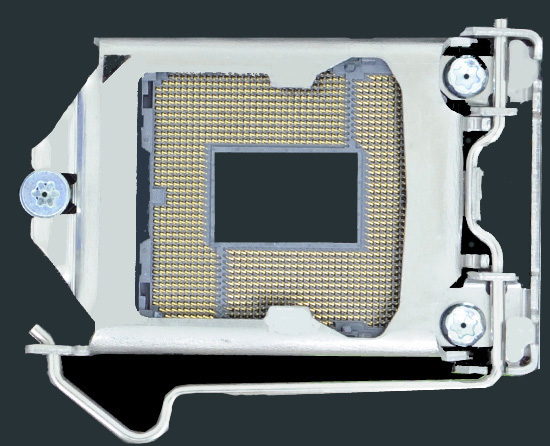
The LGA-1156 Socket
I wish I could provide a more detailed motherboard pic but a quick Google search should yield good results. The entire plate that holds the CPU in place actually lifts up and to the right in the picture above. The notch at the left of the plate slides under the screw you see on the left side and the lever at the bottom secures it in place. It works pretty well in person.
The new socket requires a new cooler. The four mounting holes are closer together on the LGA-1156 socket than they are on LGA-1366 boards, but further apart than LGA-775. It’s just different enough to require a brand new cooler, or at least a new mounting bracket.
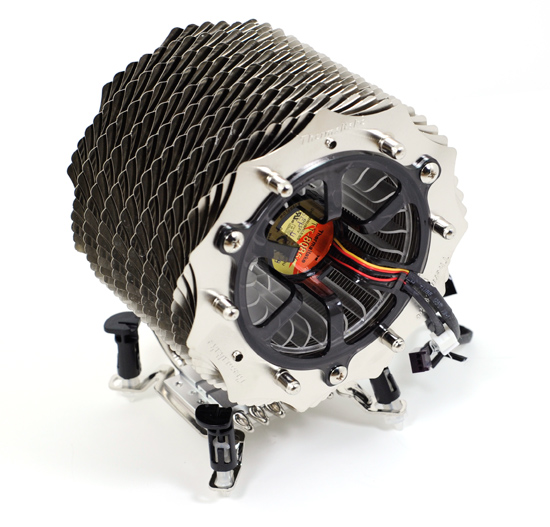
Thermaltake's SpinQ: Our first LGA-1156 cooler
Thermaltake sent over its SpinQ which will ship with an adjustable LGA-1366 bracket that can be used on both LGA-1156 and LGA-1366 motherboards. Each peg can slide back and forth to get the right positioning before locking it down, allowing the cooler to work on both platforms.
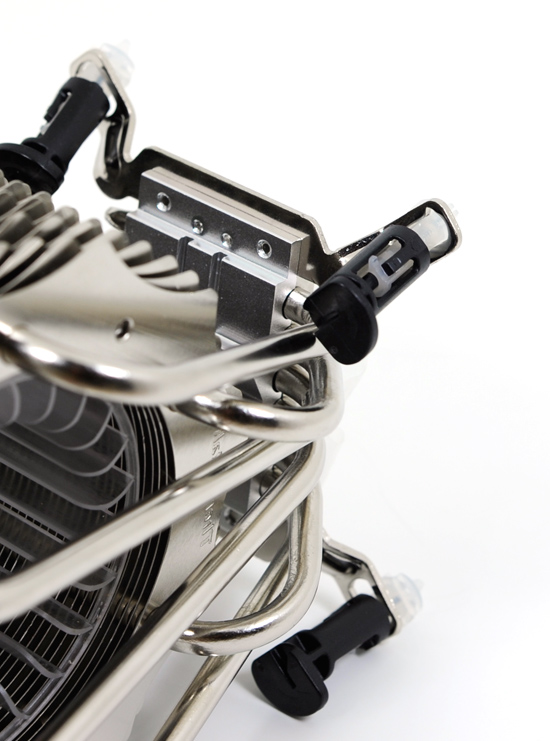
Oooh, adjustable mounting pegs
The cooler performed just fine in our tests and looks painful so try not to sit on it.
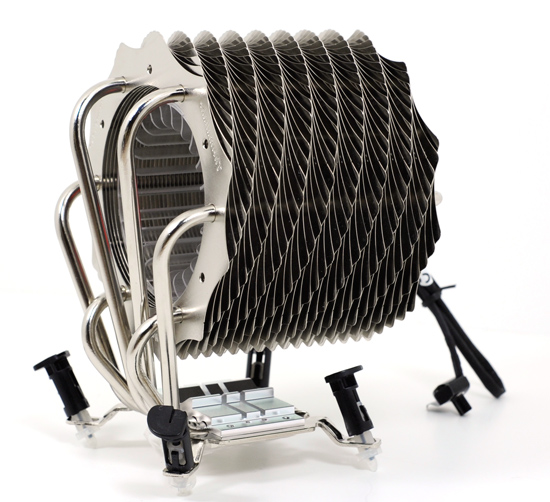
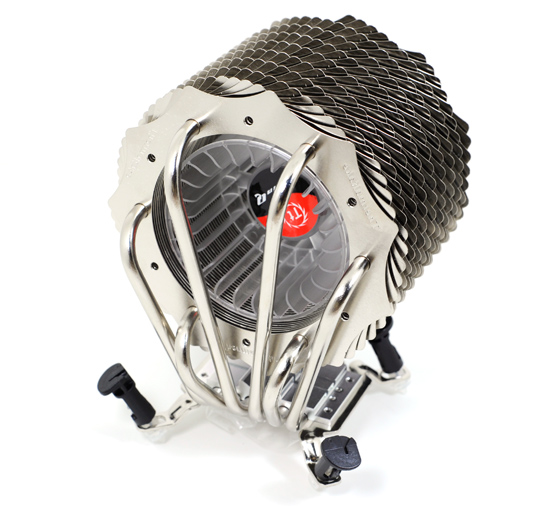










95 Comments
View All Comments
Seramics - Sunday, May 31, 2009 - link
Why is it that in test that demand intensive multi threading, the lynnfield loses out to bloomfield while in less intensive multithreaded or single threaded test, the lynnfield can equal bloomfield? Could it be that in intensive multithreading processing that work up more than 4 threads (thereby requiring the use of HT for better performance), it is able to use the extra memory bandwith provided by triple channel in the bloomfield platform? Maybe in situation where the software can really demand mutlple threading processing intensively, the bloomfield extra memory bandwith provide an edge. An easy way to test this is increasing the memory bandwith of lynnfield and/or decreasing memory bandwith of bloomfield n see wht happens in intensive multithreaded test. Im suspicious of this. Let me know wht u guys thinks.IntelUser2000 - Sunday, May 31, 2009 - link
The Turbo Modes for revealed for Lynnfield way before even Core i7's release.1 core: +5(+4 for non-HT version)
2 core: +3
4 core: +1
It may or may not be coincidence, but the Turbo speed of the highest clock Lynnfield is equal to the Turbo speed of the highest Core i7. The point is, I think since people will overclock the "enthusiast" i7's anyway, the Turbo doesn't need to be so high.
According to Intel, the benefits will be GREATER on smaller form factors, which means laptops will have even HIGHER increases.
RagingDragon - Sunday, May 31, 2009 - link
Hmmm... I'm not sure how much sense Lynnfield will make in the long term - at the high end you'll have Bloomfield on LGA-1366, and at the low end Clarkdale/Arrandale on LGA-1156. I'm not sure if there's enough room between them for Lynnfield, though I guess it does provide an easy upgrade option for inexpensive OEM systems which need to support Clarkdale.brightstar - Sunday, May 31, 2009 - link
I'll wait and see how this pans out, but as of right now the I5 sounds like the new Celery proc to meJS - Saturday, May 30, 2009 - link
"...to protect the innocent"I guess you really wanted to say "to protect my sources". I'm guessing they are not innocent at all, unless you actually stole the stuff from them. ;o)
mybook4 - Saturday, May 30, 2009 - link
The article mentions that Lynnfield will have a new turbo mode that clocks much higher. I was thinking of reasons why intel might put this feature into the mainstream i5 rather than making the feature exclusive to the i7. Then I remembered that the PCIe controller was integrated into the core.To overclock a multiplier locked i5, you would have to increase the base clock. Not sure, but I believe this would also overclock the PCIe controller (something which may not be as tolerant of overclocking).
This might explain why the new high end turbo mode would be included in the i5. You lose high overclocking potential (which would attract overclockers to i7), but in exchange, the i5 does decent overclocking for you.
pyn - Saturday, May 30, 2009 - link
is it possible that we will see turbo modes similar to lynnfield in gulftown? also, is intel going to release any 8 core / 16 thread nehalem processors targeted towards desktop systems or is the nehalem-ex likely to be the only 8 core nehalem we will see?mmpalmeira - Saturday, May 30, 2009 - link
Why did you use the Lynnfield in a 2.66Ghz configuration with HT on if there wont be models like that in the market?Anand Lal Shimpi - Saturday, May 30, 2009 - link
I did that to show what sort of performance having HT enabled is responsible for. Intel isn't making a 2.13GHz HT enabled Lynnfield either, but I ran those tests because they're interesting to look at :)Take care,
Anand
Drazick - Saturday, May 30, 2009 - link
Will the P55 support USB 3, SATA 3, UEFI?When will we see all those features in the chipsets, which for me, are much more important than the i5 by itself.
What about the new Chiopsets, are they SSD optimized?